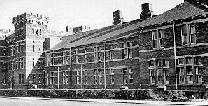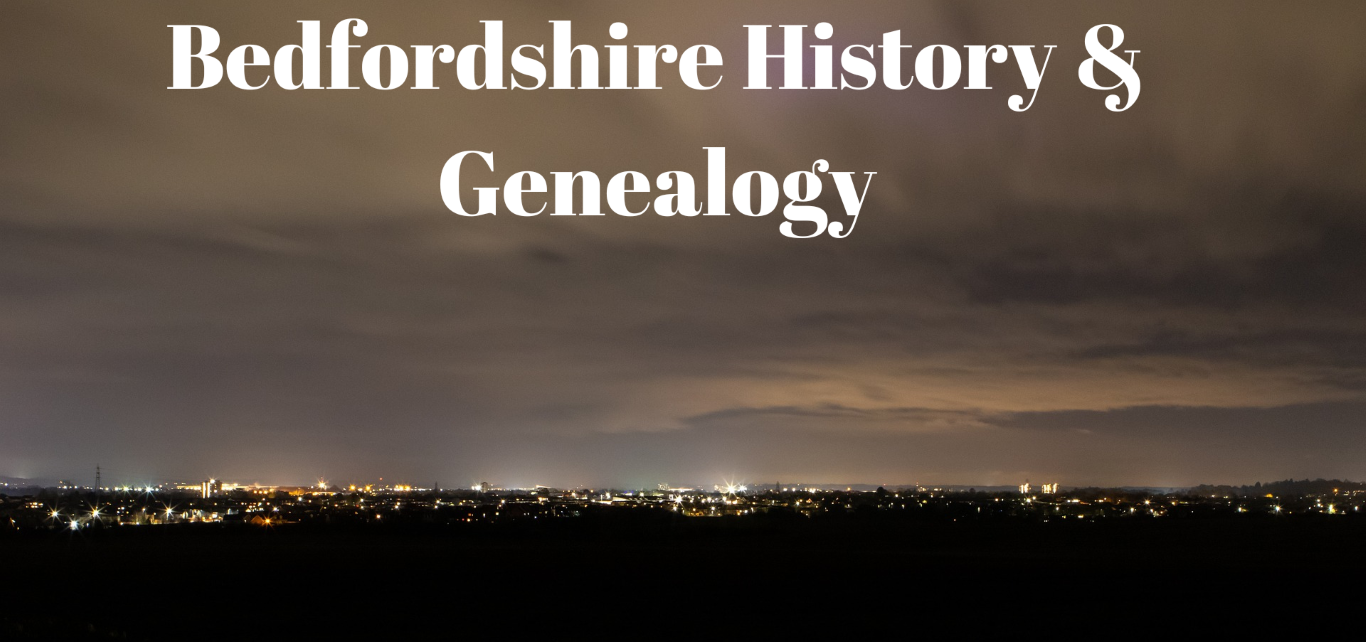KEMPSTON
The Domesday Book calls it "CAMESTONE". In the British Museum and also the Bedford Museum are finds from an Anglo Saxon Cemetery, now called the Saxon Centre. The most important was a famous glass drinking horn in perfect state of preservation. The importance of this discovery is that there is evidence of a peaceful community settled in Kempston and it was a thriving place before Bedford came into the picture.
Alfred and Guthram defined the boundaries of their respective domains Wessex and the Danelaw in AD 885. It would seem that Kempston was just in King Alfred's territory. In the reign of Edward the Confessor, Camestone (Kempston) was held by Earl Gyrth, brother to King Harold (who was killed by an arrow in 1066). Gyrth was also killed at the Battle of Hastings.
After the Conquest, King William gave Kempston to his niece, the Countess Judith de Balliol, wife of Waltheof who became Earl of Northampton. Unfortunately Judith is best remembered for her treachery against her husband when he was unjustly tried and executed for treason.
In 1086 she founded the Benedictine Convent for Nuns at Elstow. There were then 2400 acres of arable land in Kempston and they needed 20 teams of oxen to keep them in cultivation. However, a lot of land was uncultivated because it was too wet and marshy. The River Ouse worked a mill to which the people took their corn to be ground. There was said to be 40-45 men over 16 and their families in Kempston at this time.
[From Samuel Lewis's Topographical Dictionary of England 1831.]
KEMPSTON, a parish in the hundred of REDBORNESTOKE, county of BEDFORD, 2¾ miles (S. by S.W.) from Bedford, containing 1419 inhabitants. The living is a vicarage, in the archdeaconry of Bedford, and diocese of Lincoln, rated in the king's books at £12, and in the patronage of Rev. G. Ousley Fenwicke. The church is dedicated to All Saints. There is a place of worship for Wesleyan Methodists. Within the parish are the sites of several moated buildings.
Manors
In about 1237 we hear of various Manors of Kempston, the names of which are still used today.
-
Daubeney. 1333 the Crown granted this manor to WiIIiam Daubeney and it remained in his family till 1502 when it was sold. The Manor House next to the Manor Hall, the home of Kempston Town CounciI, is on the site of the original Daubeney Manor House. Henry Ill visited Kempston in 1224 when he was at the siege of Bedford Castle and he is said to have stayed at the Daubeney Manor House.
-
Kempston St. John's and Brucebury originally was granted to Isobel, wife of Robert de Bruce and claimant to the Scottish throne.
-
Hastingsbury or Greys was granted to Ada, the wife of Henry Hastings. It eventually was inherited by the Greys of Wrest. The Manor House stood to the west of the present Bury House.
Famous Residents
The names of residents in Kempston are remembered in some of the street names.
Balliol, John de, founded Balliol College, Oxford, and married Devorguilla, a descendant of Countess Judith. She was the mother of a second John de Balliol who became King of Scotland.
Cater, William, bought the Kempston Greys Estate in 1624 for £7200 and the family remained in Kempston for 175 years. They lived in a house near the Bury House. They also owned Kempston Mill.
Dennis, William, a London merchant, bought the manors of Daubeney and St. Johns in c.1603 for £7356. The family eventually sold their land in Kempston in 1809 to Williamson The Rev Edmund, and in 1815 he built the "house that still stands between the street and the river", i e. the Manor next to the Manor Hall. It was a gift in Mrs. Williamson's will that made possible the building of the Church of the Transfiguration. She also built and endowed the St. Johns Almshouses as a memorial to her husband.
Littledale, Henry, a director of the Sun Insurance Company, built Kempston Grange in 1845 on the Ham Field.
Thornton, Harry, was a nephew of Henry and inherited the Grange in 1866. Eventually it was purchased In 1885 by Mc James Howard and his widow gave the Grange and the Park for ever to the people of Kempston.
Kempston Barracks
The Victorian barracks at Kempston, the Regimental Depot of the 16th Foot or Bedfordshire Regiment, were built in 1875-6 at the cost of about £50,000. The first troops arrived on 29th May 1877 and over the next sixty years thousands of men were trained here. In 1881 they became the Depot of the Bedfordshire Regiment and in 1918 the depot for the Beds & Herts. Between 1886 and 1900 the southern frontage of the Bedford Road was developed from New Town as far as the parish boundary, linking Kempston to Bedford. During the Second World War the barracks were used mainly as a convalescent centre, other functions having been transferred to Bury St. Edmunds. In 1958 the barracks closed and after nearly 80 years of decision making, a use as a Masonic Lodge has been found for the building. At least part of the Barracks, including the Keep is to remain as is the Regimental War Memorial opposite.

Historic Dates
-
27th February 1826 was the night of the great fire of Kempston which destroyed 40 houses in the High Street including part ot the King William PH. There is no account of the fire but a fund for the 55 victims raised £344.13s.
-
4th April 1829 Matthew and William Liley were hanged at Bedford Gaol for the murder of a gamekeeper. They were poaching for food for their families.
-
8th January 1904 Second Big Fire at the Half Moon near Water Lane. The Host ' Mr. Anthony was getting ready for a "smoker" when the fire was discovered at 1.30 p.m. The message reached Kempston Post Office who telegraphed at 1.40 p.m. to Bedford for the Fire Brigade and by 1.50 p.m. the horsed steamer Victoria was dashing to the scene. They were too late, the thatched roof had gone and soon everything was burned including Mr. Anthony's 600 cigars.
Kempston Charities
- The Cater Charity.
- Mrs. Ann Cater's Charity for poor widows.
- Sir William Long's Charity for the Poor's Beef.
Now all three are under the control of the Kempston Charities. They owned a workhouse which was later turned into 4 cottages in 1850. These remain to form a delightful feature of Church End. In 1960 they were scheduled as Ancient Monuments and they were sold by the Trustees in 1981.
Thirteen "Ends"
Small hamlets which surrounded the main settlement were Bell End, Church End, Box End, Moor End, Bridge End, Thistley Green, West End, East End, Wood End, Crow End, Green End, Up End, and Kempston Hardwick.
Roman Ford
The strangest and most valuable survival in Kempston. Great slabs of oolitic limestone cross the river near the Ladies Walk and on the right bank are clearly visible stepping down into the middle of the river. (Ladies Walk is just halfway down on the right in Box End Road before you come to All Saints Church.)

R.B. Sanders & Company
In 1907 R.B. Sanders and Company opened their leather works in College Street, Kempston, having moved from Higham Ferrers, Northamptonshire. The wooden premises burnt down in 1910, after which they were rebuilt on a much larger scale. The original St. Stephen's Church, Spring Road (built in 1888) was replaced in 1940 by the Church of the Transfiguration and this was subsequently used by Sanders Leather factory.
Further Reading
'Old Kempston' is a pictorial local history book, published by Stenlake Publishing, 54-58 Mill Square, Catrine, Ayrshire, KA5 6RD. Copies of the book are available at £6.99 each and may be obtained through contacting the publisher at the above address or phoning 01290 551122 or emailing them on
